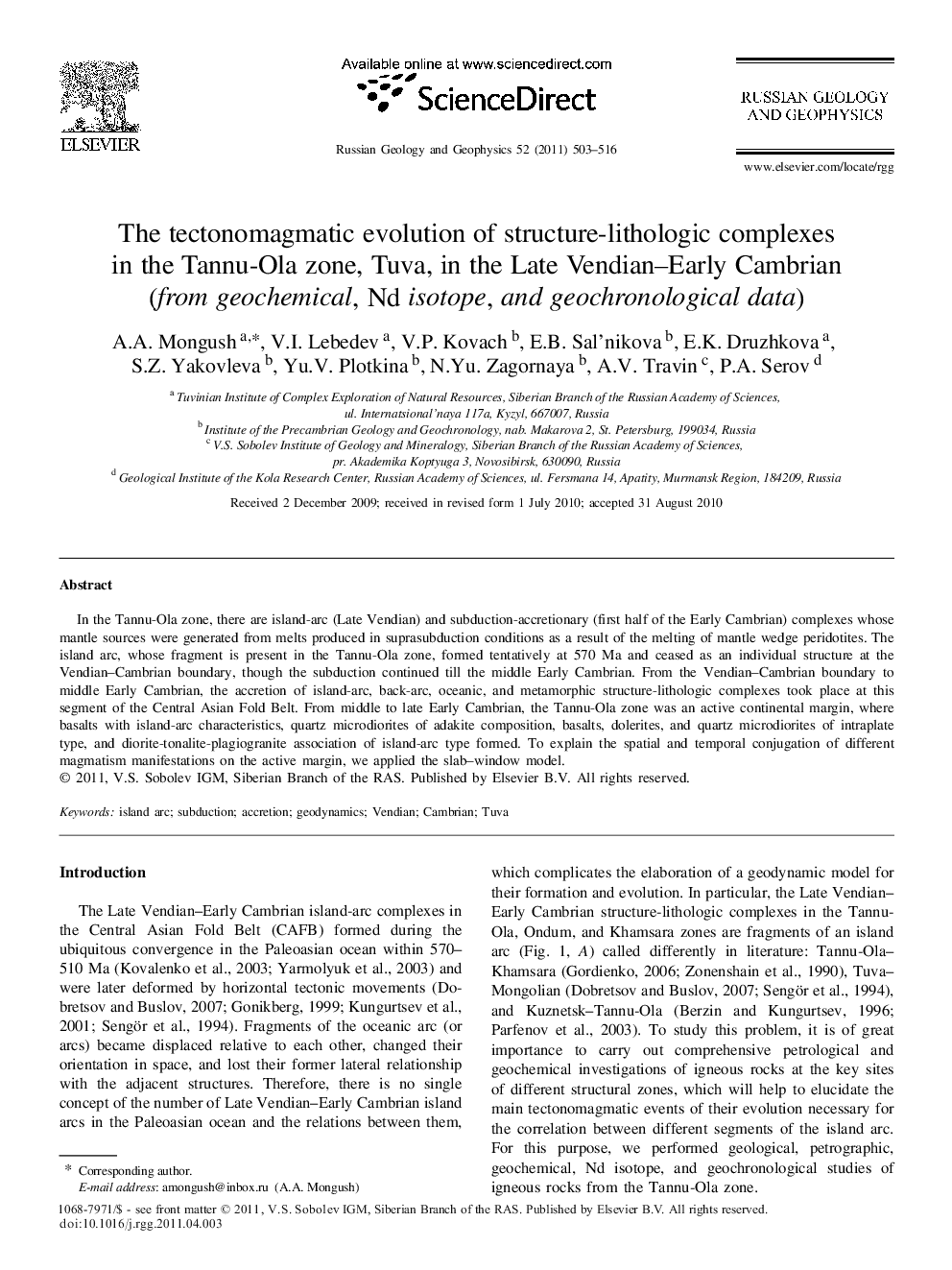| Article ID | Journal | Published Year | Pages | File Type |
|---|---|---|---|---|
| 4738615 | Russian Geology and Geophysics | 2011 | 14 Pages |
In the Tannu-Ola zone, there are island-arc (Late Vendian) and subduction-accretionary (first half of the Early Cambrian) complexes whose mantle sources were generated from melts produced in suprasubduction conditions as a result of the melting of mantle wedge peridotites. The island arc, whose fragment is present in the Tannu-Ola zone, formed tentatively at 570 Ma and ceased as an individual structure at the Vendian–Cambrian boundary, though the subduction continued till the middle Early Cambrian. From the Vendian–Cambrian boundary to middle Early Cambrian, the accretion of island-arc, back-arc, oceanic, and metamorphic structure-lithologic complexes took place at this segment of the Central Asian Fold Belt. From middle to late Early Cambrian, the Tannu-Ola zone was an active continental margin, where basalts with island-arc characteristics, quartz microdiorites of adakite composition, basalts, dolerites, and quartz microdiorites of intraplate type, and diorite-tonalite-plagiogranite association of island-arc type formed. To explain the spatial and temporal conjugation of different magmatism manifestations on the active margin, we applied the slab–window model.
